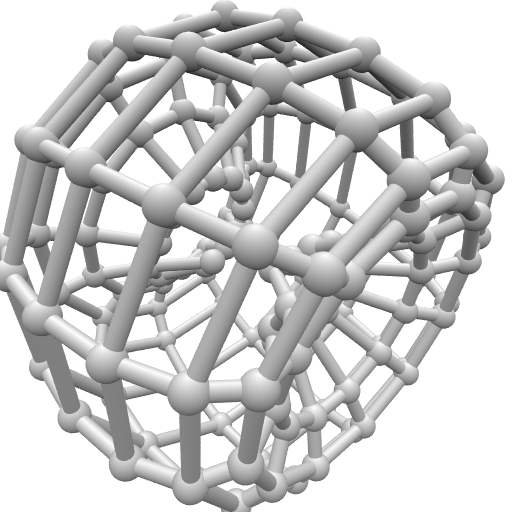After installing that matrix math library, I spent a week’s evenings pushing several abstract graphs through my “topological coordinates” program and finding, to my lack of complete shock, that none of them had any neat three-dimensional embedding.
Then I tried a torus, and was again far from amazed that it didn’t work well either: all the vertices being equivalent under the inherent symmetries, there’s nothing to distinguish the “inner” from the “outer”.
I cut a seam of the torus to make a cylinder, and then I got a surprise: the free ends curl in like an apple. If anything I’d expect the opposite: the vertices along the edges, being topologically outermost, “ought” to curl outward.

One of these days I’ll get around to fullerenes.
This is the ‘sock’ operation, turning a cylinder-net into a torus by joining the ends as you might take a sock off. The alternate is a ‘hose’ operation, which connects the ends of the cylinder as one does a hosepipe.
Still, it’s a nice picture of what’s going on, and one can grasp it is nearly going to connect.
By the way, the picture also illistrates the comb product – the repetition of surfaces. One surface is of a circle that runs like a wheel. That one is complete. The second circle is the cross-section of the wheel, just to connect up.
Just shows that a polygon * polygon really can make a polyhedron.
W